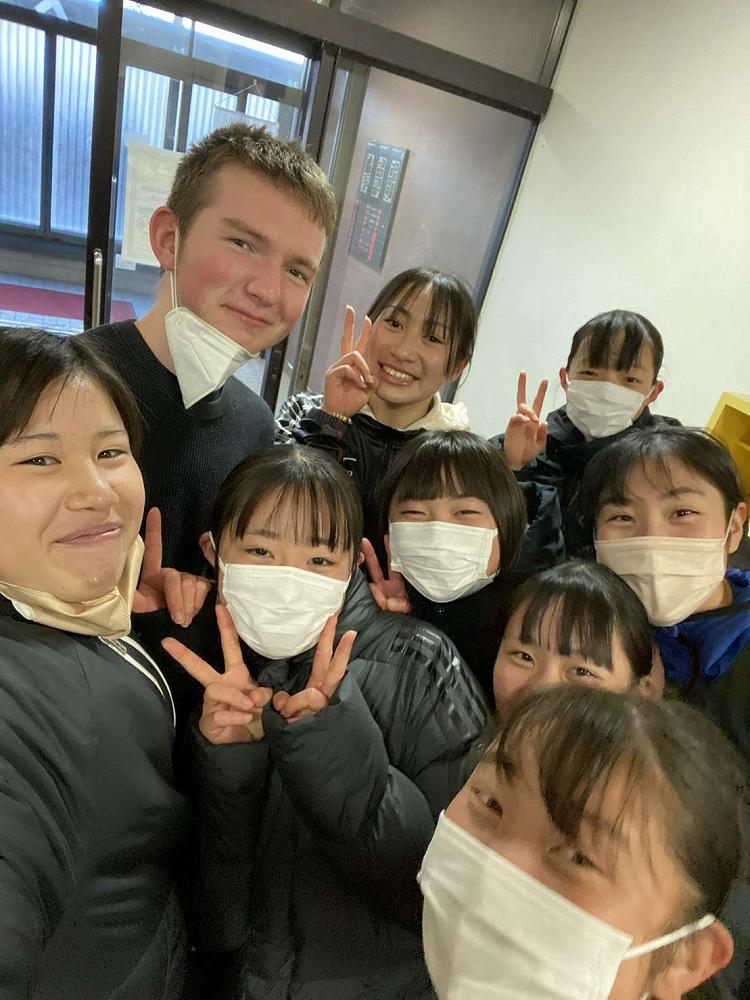
What is life like for a CBHS student on exchange?
Studying abroad in Japan highlights profound cultural and educational differences, writes former CBHS student Richard Anderson.
I am studying at our sister school in Japan on an exchange lasting 10 months. Being on exchange in Japan has allowed me to learn more about a culture vastly different from our own and also made me realise that what I considered merely normal in New Zealand could be different in other countries.
Our sister school, Sendai Ikuei Gakuen High School, is a private co-educational school founded by Rikichi Katoh. Rikichi Katoh was a veteran of the Russo-Japanese War who, after being injured, returned to Japan and founded the school. They are an internationally-minded school. For example, they are only one of Japan's International Bacculeature (IB) schools.
The school exists on two campuses and comprises 3394 full-time students. The school covers the last three years of high school, and the students are divided into 7 courses. These range from the Special University Preparatory Course to the more sports-focused Flex Course. Interestingly, rather than the courses being merely different streams, they cater to different students' needs. Students who want to pursue a foreign language, a vocation, or entry into a top university are all equally catered to here with their own courses. A particular advantage of this system is that if a student wishes to specialise early, they can, while for those who don't, there are more general courses for them to enrol in. The number of students enrolled in each course varies greatly. I participate in Eishin, which is a general course and also the largest. I was placed in the equivalent of a Year 11 class. Considering how many different courses there are, I'm sure there are various ways classes are taught here. At least for my course, classes are taught differently than in New Zealand. Desks are arranged in a grid, and teachers deliver the lesson in Japanese while students take notes. I am taught History, Mathematics, English, the Japanese Language, Biology, Chemistry, Home Economics, Health, and Physics. English and Mathematics are streamed into Alpha, Beta, and Theta classes.
Typically, lessons involve a teacher delivering the lesson in front of the class while students take notes. The students are supplied iPads by the school to help them work. While I prefer the more collaborative environment used at CBHS, the students in my class do not do worse than our equivalent Year 11's and quite enjoy school; in fact, a lot of content they cover early is covered in Level 2 NCEA.
The school day and week are different than CBHS. For most subjects, except for Music and certain Maths and English periods, we stay in our homeroom while teachers move around. This means that periods are 50 minutes with 10 minutes for us or the teacher to arrive at the next lesson. Lunch occurs after three periods, and there is no Morning Tea. The school day always starts at 8:50 with homeroom, but the actual length of the school day varies. Days are usually 7 or 6 periods long. Weeks alternate between the Week A and Week B schedules where Week B includes a short school day on Saturday. Students commonly have club activities after school, and practices usually are more frequent than the extracurricular opportunities at CBHS. Clubs include Baseball, Cheerleading, Kendo, Archery, Rugby, and tea ceremony.
While most international students participate in homestays, I stay in a dorm that is a five-minute walk from my campus. Aside from a few international students, my dorm houses rugby players. Most international students are from China or South Easia Asian countries. There are around 43 rooms across three floors. Each student has their own room, which includes a shower and a toilet. There is a cafeteria on campus that provides breakfast and dinner. Students are able to buy their own lunch at school. There are a few Ukranian international students and many Africans who are here for track and field.
I would be remiss to mention that very little of the work required for me to arrive here was my own. Mr Waller, Carl Everett, and Mr Hill were all invaluable in making this possible. Sendai Ikuei Gakuen didn't invite Richard Anderson; they invited a Christchurch Boys' High Student who they understood had the confidence of his school.